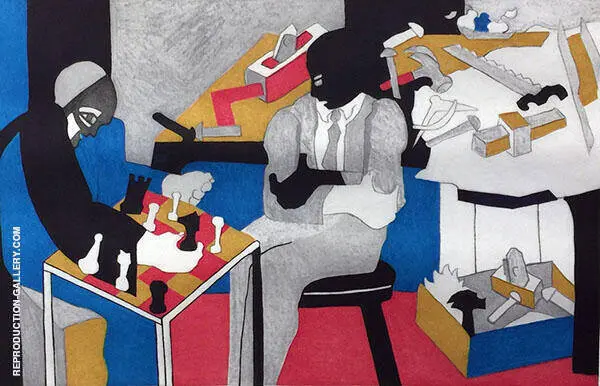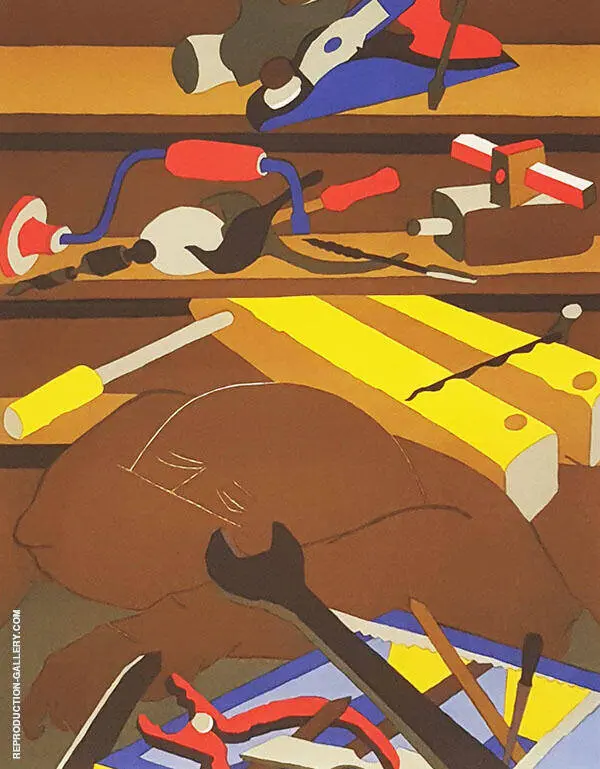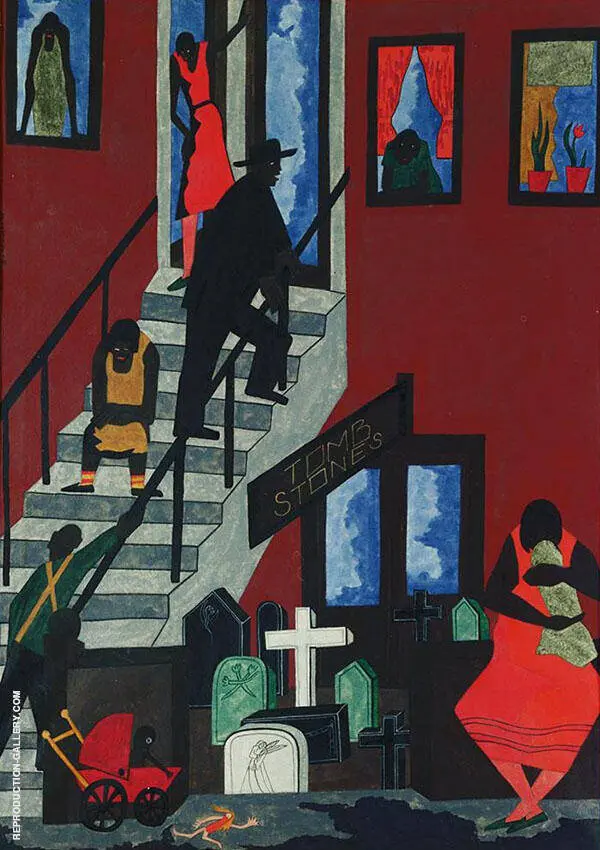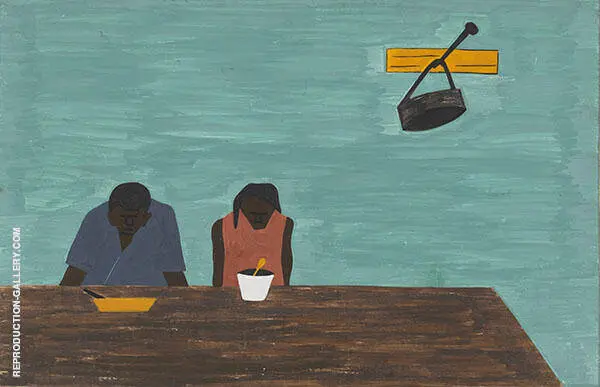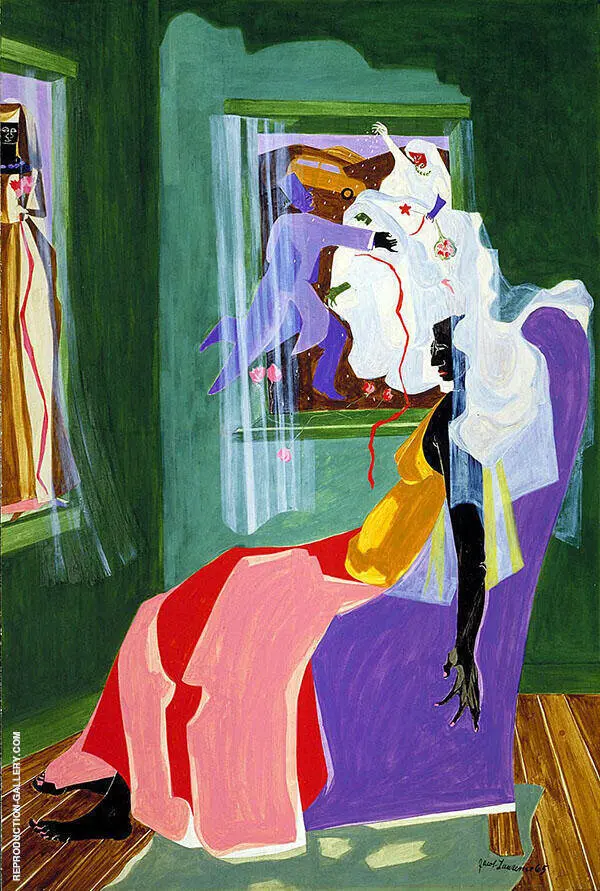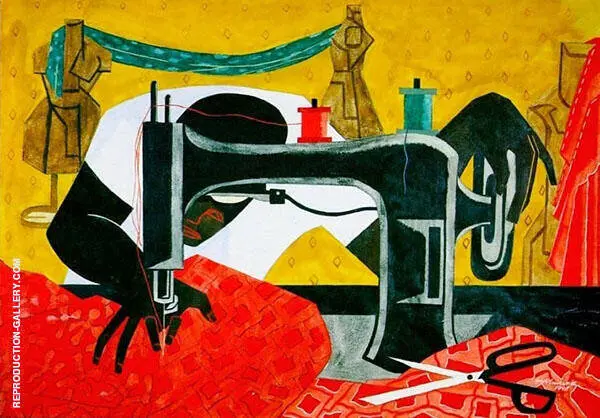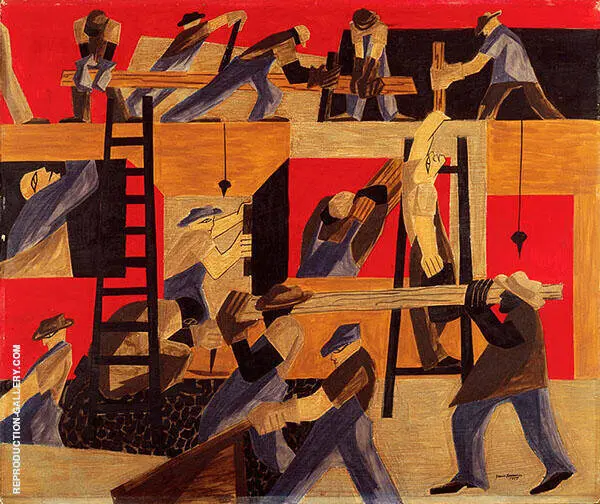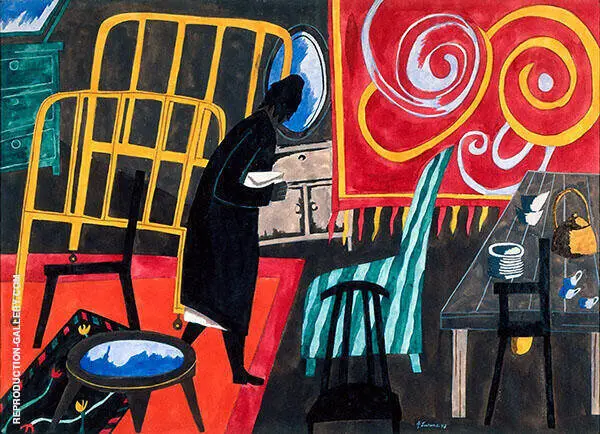African American Art Oil Painting Reproductions
Find African American Art Oil Painting Replicas by African American Art Artists
African American Paintings: A Brief Introduction
African American art is a comprehensive description referring to any art created by American artists identifying as black. It thus covers a vast array of fascinating art and artists.
This brief introduction examines some famous African American paintings and artists.
When did African American art start?
The earliest evidence of black American art in the United States stems from enslaved people and craftspeople working in New England during the seventeenth century. Examples include personal sculpted items as well as objects created for public sale. These include quilts, for instance, those created by Harriet Powers, and powder horns carved by John Bush. Drawings, engravings, ceramic vessels, baskets, and metal figurines were also produced. This art gradually became a more significant part of the Southern Colonial economy. Here, enslaved Americans engaged in cabinet making, goldsmithing, engraving, carving, portraiture, and carpentry. By the late 18th century, some paintings by black artists garnered considerable fame, particularly amongst abolitionist families in Northern cities, who sometimes sponsored artists. Northern urban centers, notably New York, emerged as hubs of artistic creation during this time.
What is African American art history?
It refers to any art created by African Americans living in the USA or elsewhere. Nonetheless, many scholars use the term to describe the visual art of the Harlem Renaissance. Art from the Harlem Renaissance arose from a massive flourishing of creativity during the 1920s. Based around the Harlem District of New York, although not exclusive to the city, notable artists include Aaron Douglas, Palmer Hayden, William H Johnson, and Horace Pippin. Harlem soon became known as the “cultural capital of Black America.”
In 1922, William E Harmon founded the Harmon Foundation, a philanthropic organization financing artists of color until the mid-1960s. While funding briefly stopped during the Great Depression, which started with the 1929 Wall Street Crash, it quickly resumed once the economy revived in the 1930s. Artists such as Jacob Lawrence and Ernest Crichlow soon rose to prominence.
What is African American art called?
There are several names for different eras. Here are four of the most famous movements:
- The Harlem Renaissance: Beginning around the end of the World War I, the Harlem Renaissance saw cross-disciplinary creativity flourish. Oil painting artists and music, from the likes of Duke Ellington, theater, literature, philosophy, and dance, gave birth to the “Golden Age” of culture.
- Black Abstract Expressionism: Many black American artists turned to Expressionism Art in the 1950s. Alongside developments in Abstract Art, this became a defined movement called Black Expressionism. Black Abstract Expressionism aimed at communicating raw emotion. It often depicts African Americans' painful and triumphant history in the United States.
- Black Social Realism: In the aftermath of the two World Wars, many artists adopted this style. It drew attention to the socio-political realities of working-class black people. The movement often critiqued power and privilege, trying to hold governing classes accountable for their actions.
- The Black Arts Movement: This artistic movement was active during the 1960s and 1970s. Using a mixture of activism and art, the Black Arts Movement fostered black social and cultural pride. It often resisted traditional Western artistic ideals and explored new ways to communicate the contemporary black experience.
How would you describe African American art?
There is no single definition. For instance, the art of the 18th century often reflected African artistic traditions. On the other hand, commercial fine art produced in the 19th century frequently used Western academic styles, mainly inspired by French Classical Art. However, the Harlem Renaissance was the 20th century's most influential black-American artistic development. Artists in this era produced colorful wall art, using bright, bold colors, strong outlines, and paintings with balanced perspectives. Oil paintings are full of energy, exemplified by artists such as Jacob Lawrence and Horace Pippin.
While World War II meant much artistic production stopped, African American art rebounded during the 1950s. Now dominated by trends such as Black Abstract Expressionism and Social Realism, leading artists included Charles Alston and James Wells. As the 20th century progressed, black American art explored developments in new contemporary abstraction. Despite these differences, African American artists commonly grapple with complex identity and black history issues. In varying ways, oil paintings by black artists often deal with everyday experiences, social justice, injustice, and cultural identity.
Who is the most famous African American painter?
Jacob Lawrence created some of the most famous African American oil paintings. In addition, he painted several narrative works, such as the Migration of the Negro series, which features striking black figures silhouetted against vividly colored backgrounds. His paintings often dealt with America’s troubled history of slavery, poverty, and social injustice. For instance, the Harriet Tubman series depicts figures bounding over the dry earth against a blue sky. Tubman escaped slavery and then helped free over 70 individuals, and these paintings celebrated Harriet Tubman’s extraordinary life.
Later in his career, Jacob Lawrence also painted many scenes of everyday work. Still using contrasting and vivid primary colors, he highlighted the honor and beauty of manual labor. Characteristic paintings of this period include Workshop 1972 and Tools 1977. Lawrence also worked as a professor at several academic institutions, including the University of Washington in Seattle, where he continued teaching until the late 1980s. He worked on several large-scale mural commissions in later life. In addition, Lawrence produced limited edition prints raising money for social causes such as the NAACP Legal Defense Fund and continued painting until a few weeks before his death on 9 June 2000.
Who are some famous black artists?
In addition to Jacob Lawrence, many more famous black artists worked during the 19th and 20th centuries. Other artists include William H Johnson, Eldzier Cortor, Horace Pippin, Palmer Hayden, Ernest Crichlow, Aaron Douglas, and Charles E Porter. Charles E Porter's meticulous paintings inspire generations of famous black painters. His early oil paintings, Peonies in a Bowl and Mountain Laurel, focus on still-life paintings in a classical European style.
African American artists such as Horace Pippin, working during the height of the Harlem Renaissance, deal with themes of racism and segregation in America. Pippin frequently depicts singular figures in his artwork, with paintings often coping with the loneliness of the black experience as defined in The Park Bench 1946. However, Horace Pippin never shied away from the violence and hypocrisy of modern American society. Several of his paintings deal with such issues, including The Whipping and Mr. Prejudice.
Other African American painters, such as William H Johnson, depict everyday social reality. Like Pippin, William H Johnson drew on his time serving in the American military. However, he also heavily references folk art tradition, creating a dynamic, colorful style. William H Johnson’s paintings At the Cafe and Going to Church address themes of society, religion, and the everyday landscape for African American people.
Why are African American Paintings important?
African American Art is essential not only for the individual artist's skill of the artists and creativity but also for the sheer beauty of their paintings. Moreover, it is a unique art born from a troubling period in American history, taking cultural influences and inspiration from worldwide. African American paintings in your home celebrate these artists and their social messages. The history of African American people in the USA is a story of intense suffering, sacrifice, bravery, determination, and triumph.
Their art tells this story and continues to do so in the present. Indeed, African American art and Harlem Renaissance paintings continue to shape how we think, our place in society, and how we imagine the future.
African American Wall Art: Fine art oil paintings
If you love the colorful wall art and dynamism of African American paintings, explore our extensive collection of famous paintings by black artists. Buy Modern Art from the Harlem Renaissance and reproduction oil paintings by famous black painters.
We have been creating replica paintings since 1996. Our Money Back Guarantee covers standard catalog paintings. FREE GLOBAL SHIPPING.
Cannot Find What You Are Looking For?
Reproduction Gallery Information
Customer Service
(Send Us A Message)
Tel: (302) 513 3464










